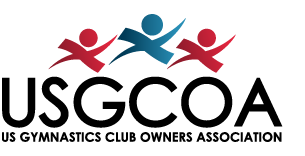Gymnastics for Autism: How Club Owners Can Get Involved
Every April, we celebrate Autism Awareness Month! There are many opportunities in gymnastics that can provide kids with autism new skills and improve their developmental progress. 1 in 44 children are affected by autism, and gymnastics practices can offer a recreational outlet to expand their physical, social, and mental boundaries in a safe and fun environment. Adding a special needs class for kids with autism can open new doors for your gymnastics club. This article will explain the aspects of autism, the benefits of gymnastics for autism, and how gymnastic club owners can get involved.
What is Autism?
Autism, or autism spectrum disorder (ASD), is a broad range of conditions characterized by challenges with social skills, repetitive behaviors, speech, and nonverbal communication. Autism is referred to as a spectrum due to the varying symptoms and severity. Many children may only have mild symptoms, while others can develop more extreme symptoms. Some symptoms could include lack of eye contact, repetitive behaviors, being socially withdrawn or aggressive, or a lack of response when someone may be speaking to them. While generally diagnosed in early childhood development due to close watch of social and function patterns, autism can be diagnosed at any point in one’s life. There is no cure for this disorder, but there are various treatments that can help someone with autism, especially gymnastics!
Benefits of Gymnastics for Autism:
Since gymnastics is a sport that focuses on refining one’s coordination and tuning into the mind and body, gymnastics provides moments for enrichment like stimulating the brain, increasing social skills, strengthening gross & fine motor skills, and discovering new skillsets. Gymnastics for autism is a different approach to treatment options, especially for those looking to increase retention and focus skills that they can later apply to real-life scenarios. Anyone with autism should have the ability to learn at their own pace, but gymnastics can create a new behavioral approach to structure and organization, which is important for the treatment of many kids with ASD. Although gymnastics can be an individual sport, classes and small group introductions create an opportunity for more interactions with their teammates and coaches. More group introductions can influence new behaviors like listening and following directions, taking turns, increased verbal requests, and increased eye contact. With the many disciplines of gymnastics, children with autism can benefit from the sensory and spatial properties of the sport. The benefits of gymnastics for autism are endless with how varietal and comprehensive the classes can be created and taught.
Getting Involved:
There are plenty of ways to get involved with gymnastics for children with autism. Usually, one of the best resources is the parents themselves, so don’t be afraid to reach out to parents and the type of communication or other helpful hints they may have for structuring a special needs or a special Olympics class. You can also view some mentor clubs featured in the “How to Start a Special Needs Program Guide” found here. Other ways to show your support is to get involved with any performance opportunities and competitions like: USA Gymnastics For All , HUGS Program, Festival Rhythmic Program, or supporting the Special Olympics Team USA.
Gymnastics gives people with autism a chance to experience new emotions and behaviors they haven’t been able to achieve before. Children and adults with autism face challenges every day, but gymnastics can create an outlet for them to learn new skills and encourage them to be the best they can be. So, get your club involved and spread some awareness this month for autism!
For more information and other ways to support autism, visit autismspeaks.org.


